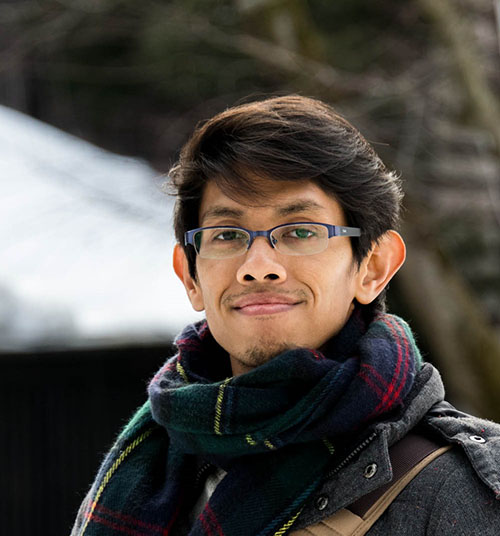Note: this post was re-posted from my old website, originally published in December 2016.
This is the second part of my ‘rush’ Tokyo trip. You can find part 1 here! Quite in contrast with the first part, the second part contains more of a city vibe of Tokyo.
Day 2
Day 2 started with me going to a place I have wanted to visit for a long time: Hamarikyu Garden. Hamarikyu Garden was one of the first places I googled to find information about Tokyo when planning my first trip to Japan several years ago. I did not go there in the end, so it had become my Moby Dick.
And the place does not disappoint. Hamarikyu Garden is as big as you would see on Google Maps. I came from Nakanogomon Gate after getting off the train at JR Shiodome station. Once I passed the gate, I was treated by the vast landscape of the garden. It was greenery everywhere, with Tokyo’s tall skyscrapers in the background. The stark contrast adds another layer of beauty to it.
There are several ponds here; the biggest one has a tea house floating in the middle, connected by a wooden bridge (top image). During the Edo period, this garden was used as a duck hunting ground. The remnants of the duck hunting era could still be seen throughout the garden, mainly in two of the ponds that house reconstructed duck hunting blinds and moats to keep the ducks from fleeing.
Visitors could also take the water bus to or from Asakusa from the garden. The water bus platform lies on the side that faces the large canal linking to Hinode Pier.
After lunch, I decided to head to a place I never visited before: Midtown. I have been to Roppongi before but not Midtown, although they are side-by-side.
If Yanaka represents Tokyo’s traditional, intimate side, Roppongi and Midtown represent the modernity and glamor of Tokyo as the biggest, most populous city in Japan. There is not much I can say other than this is the super fancy part of the city. You’d love it if you’re a fan of big cities.
Honestly, though, I was slightly overwhelmed by the sheer number of people here, especially on weekends. Finished with Roppongi, it’s time to visit this second-biggest city in Japan. I specifically went to Minatomirai area because I was told it was beautiful at night. So the trip was to prove that suggestion.
And it was not overrated at all. Yokohama’s Minatomirai is indeed beautiful at night. It has a small theme park Cosmoworld, a ramen museum, and a sail ship anchored nearby. It reminds me a lot of the Bay Area of Singapore, where the night is also bright and vivid.
I returned to my hotel sometime later, but not before I stopped by Asakusa and the nearby area. It was still majestic even at night. And best of all, there were almost no people nearby. I was happy enough to capture some night shots with my camera.
Day 3
On the morning of day 3, I spent some time strolling down by the Sumida River, not so far from Asakusa. As I’m used to seeing rivers in Southeast Asian cities, the river here looked very clean in comparison. You could see Tokyo Skytree from the distance here.
Before I got to lunch, I decided to make a short stop at Akihabara, hailed as Japan’s otaku heaven. I had to admit my fascination with anime culture had faded years ago, but even so, I could still enjoy seeing things here and there in Akihabara. If I had extra money, I would have spent it going to one of the many maid cafes there just for kicks!
After lunch, I went to Ueno. I have not been here previously, so I was curious. There is a huge park in front of Ueno station, which lies Ueno Zoo. As it was Sunday, there was a huge crowding of people. Nevertheless, I did enjoy going to the zoo. Though small and felt a bit cramped, it was pretty interesting.
Exiting the zoo, I stopped by the park, which is so immense that there are plenty of other things to see, such as small temples or museums. Seriously, there are many museums there that I regretted not being able to stay there longer than I did. However, I was delighted to find a group of locals clad in traditional kimonos practicing Bon dance at a remote park corner.
In the last destination of Day 3 itinerary, just as the night came crawling in, I took the train down to Shinjuku. While waiting for my bus back to Sendai, I thought I should visit a little place near JR Shinjuku station called Golden Gai. This area comprises small, narrow alleys and is a drinker’s haven. Golden Gai is basically what happens when you collect many pubs/bars and jam them all in a very tiny enclosed space.
Walking through the narrow alleys of Golden Gai you get a very bizarre feeling as if you have traveled back in time to the olden days where Japan had booming economic growth after the end of the war, resistant to the modernization that affected the entire Shinjuku area.
It is probably fun to try drinking here, but from what I read, not every establishment welcomes walk-in patrons, as they only accept regular customers. I saw many bars put ‘foreigner welcome’ on their signboard, but I had yet to try. Best to check first to see the etiquette of visiting such premises. I was content just to walk around and see this historic spot.
And with the night visit to Golden Gai, my trip to Tokyo was over. I am sure there are more places untouched in Tokyo, but I will leave that to next time.

